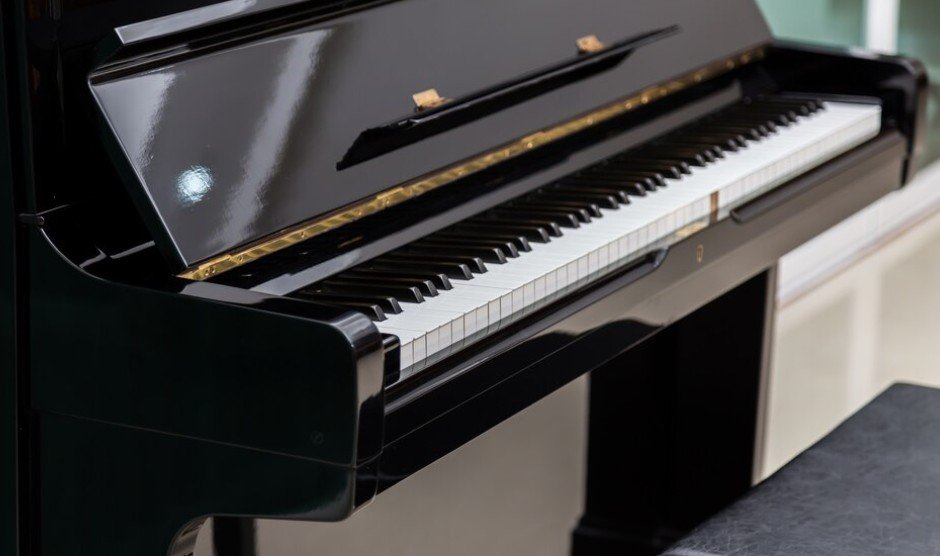Roland Pianos Redefine Sound and Style
Roland Pianos for Musicians Who Demand More
Basic Information
In an era where digital innovation and traditional artistry intersect, few brands have managed to strike a perfect balance quite like Roland Pianos. Known for their groundbreaking technology, sleek design, and unmatched sound fidelity, these instruments have become a favorite among both aspiring musicians and seasoned professionals. But what exactly sets them apart in a market crowded with digital and acoustic options?
This article explores the defining features of Roland’s piano range and how their cutting-edge designs are shaping the future of piano music.
Merging Tradition with Innovation
Digital pianos once played second fiddle to their acoustic counterparts, often criticized for synthetic sound and limited expression. However, Roland has turned that notion on its head by developing pianos that offer the touch and tonal complexity of a grand piano, enhanced with modern features.
Roland Pianos employ technologies like SuperNATURAL sound modeling and hybrid key actions to replicate the organic nuances of acoustic instruments. The result? A responsive, richly detailed sound that captures the emotion behind each note.
Superior Technology in Every Key
One of the most prominent features across the Roland lineup is the SuperNATURAL Piano Modeling engine. Unlike traditional sampling methods, which rely on recordings of acoustic notes, this system uses mathematical algorithms to generate sound in real time. This allows players to experience authentic variations in tone based on touch, speed, and dynamics.
Beyond sound, the keyboard itself deserves attention. Many Roland models include PHA-50 key actions—a blend of wood and molded material that replicates the texture of ivory and ebony. The result is a natural feel that stands up to long-term play without warping or wear.
Compact Yet Elegant Designs
Space has become a luxury in modern homes, making large upright or grand pianos impractical for many. Roland addresses this concern with slim, minimalistic models that fit seamlessly into any room without sacrificing performance. Whether it’s a home studio, classroom, or small apartment, there’s a Roland piano designed to blend aesthetics with functionality.
Visiting a piano store often reveals just how diverse Roland’s offerings are—from console-style instruments that mimic traditional uprights to portable models ideal for gigging musicians. Each design maintains a refined visual appeal that complements both classic and contemporary interiors.
Seamless Connectivity for the Digital Age
Modern musicians increasingly rely on technology for learning, composing, and recording. Roland’s pianos cater to this trend with an array of connectivity options, including Bluetooth MIDI, USB ports, and wireless audio. This enables integration with apps, DAWs, and recording software—making it easier than ever to practice with backing tracks, record performances, or access virtual sheet music.
This digital compatibility extends to Roland’s own Piano Every Day app, which helps players track practice time, play along with scores, and set goals. Such features are particularly beneficial for students and teachers alike, adding structure and motivation to the learning process.
Sustainability and Maintenance-Free Ownership
Unlike acoustic instruments, which require regular tuning and are sensitive to humidity and temperature, Roland Pianos offer a maintenance-free experience. The digital design ensures consistent sound quality year-round and eliminates the ongoing costs associated with traditional pianos.
Additionally, by minimizing the use of rare woods and heavy metals, Roland's manufacturing process aligns with sustainable practices—an increasingly important factor for environmentally conscious consumers.
Frequently Asked Questions (FAQ)
Q1: Are Roland pianos suitable for beginners?
Yes. Many models come with built-in lessons, metronomes, and connectivity features that support learning. They’re ideal for both beginners and advanced players seeking an intuitive experience.
Q2: Can Roland digital pianos replace acoustic pianos for professional use?
Absolutely. The sound modeling technology and realistic key action make them viable for studio recordings, live performances, and professional practice.
Q3: How do Roland pianos compare in price to traditional pianos?
While initial costs can vary, Roland models typically offer better value over time due to low maintenance needs and added digital features. Exploring a piano store that stocks multiple brands can help compare specifications and pricing firsthand.
Q4: What is the lifespan of a Roland digital piano?
With proper care, Roland digital pianos can last 10–20 years or more. Since they don't rely on tuning or moving parts like hammers and strings, their longevity often surpasses expectations.
Q5: Do I need external speakers for a Roland piano?
Not necessarily. Most models come with high-quality, built-in speaker systems. However, they also support external audio output for larger venues or studio setups.
Conclusion
In redefining the modern piano experience, Roland Pianos have managed to blend craftsmanship, innovation, and design into a single instrument. Their ability to mimic the nuanced sound of acoustic pianos, coupled with smart features for modern living, makes them a standout choice in the digital piano landscape. Whether you're exploring options at a piano store or researching for home use, Roland offers a range of instruments that speak to both the tradition and evolution of piano playing.


